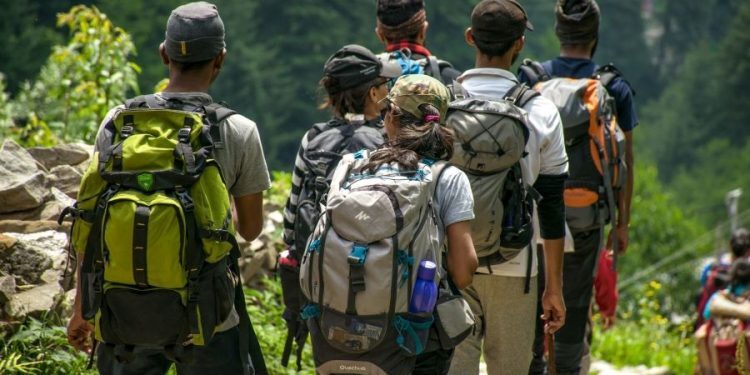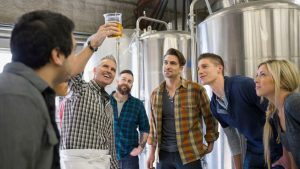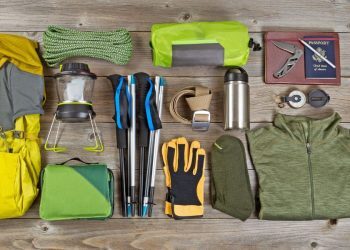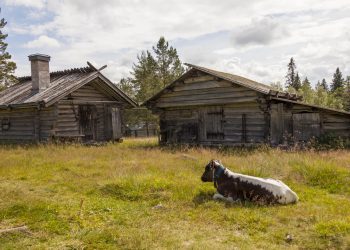Listen to the Article above
Slow travel – the art of unhurried, immersive tourism – has gained traction as a refreshing antidote to mass tourism. In Europe, several ambitious projects have tried to harness this trend to boost rural destinations. Notably, Slow Adventure in Northern Territories (SAINT) and Slow Trips were two EU-funded initiatives that championed slow, sustainable experiences across multiple countries. How did these projects fare in Sweden versus elsewhere? This investigative article critically examines their successes and failures, why Sweden has struggled to sustain such initiatives, and how a new approach like Slow Travel Sweden could chart a better path forward. We’ll explore the systemic challenges with EU-funded tourism projects in Sweden, highlight how other countries kept the slow travel spirit alive post-funding, and propose a long-term model for slow travel’s future – all while maintaining a balanced, nuanced perspective.
The Allure of Slow Travel – and EU Support to Spread It
Imagine swapping whirlwind bus tours for mushroom foraging with a local guide, or trading adrenaline-pumping zip-lines for a tranquil paddle on a misty lake at dawn. This is the essence of slow travel: savoring local culture, nature, and community at a gentle pace. Over the past decade, European policymakers and regional developers have recognized slow travel’s potential to rejuvenate rural economies and preserve heritage. With funding from EU programs, they launched collaborative projects aimed at developing “slow” tourism products.
Two standout initiatives emerged: SAINT (Slow Adventure in Northern Territories), a Northern Europe-focused project (2015–2018) centered on nature immersion, and Slow Trips, a transnational LEADER project (2020–2024) emphasizing cultural encounters in rural regions. Both injected significant resources and creativity into crafting slow travel experiences. Yet, their trajectory in Sweden reveals telling insights about what happens when the EU money runs out.
Sweden, blessed with vast forests, lakes, and rich traditions, seemed an ideal testbed for slow travel. Indeed, pilot experiences – from wilderness camps in Jämtland’s mountains to “farm-to-fork” weekends along the Dalälven River – generated enthusiasm during the project periods. However, as we’ll see, maintaining that momentum proved challenging once the initial EU-funded push was over. Meanwhile, partners in Ireland, Finland, Italy, Austria, and others managed to carry the torch of slow travel beyond the project lifespan in various ways, from forming new businesses to integrating into official tourism strategies.
Before diving into the case studies, let’s clarify what slow travel really means and how these EU funding structures work, as they set the stage for both the achievements and obstacles.

What Is “Slow Travel”?
Slow travel is all about quality over quantity in tourism. Key principles include:
– Immersion over Speed:
Traveling at a leisurely pace, often by walking, biking, train, or other low-impact means, to fully absorb surroundings instead of rushing from sight to sight.
– Local Connection:
Engaging with local communities – staying in family-run B&Bs, learning traditional crafts, tasting regional cuisine – to form meaningful connections with people and culture.
– Nature and Wellbeing:
Spending unhurried time in nature, whether it’s hiking a forest trail or simply enjoying a lakeside sunset, fostering a deep appreciation for the environment.
– Sustainability:
Choosing eco-friendly options (public transit, human-powered activities, local produce) to reduce environmental impact and benefit host communities.
– Authenticity:
Prioritizing genuine experiences – e.g. a village festival or farmstay – rather than packaged “checklist” tourism, allowing travelers to “live like a local” for a while.
Slow travel has its roots in the Slow Food movement of the 1980s in Italy, expanding the ethos of savoring and sustainability from dining to the entire travel experience. It stands in contrast to mass tourism and encourages travelers to “travel less, stay longer”, gaining richer memories in the process.
Case Study 1: Slow Adventure in Northern Territories (SAINT)
One of Europe’s pioneering slow travel projects was SAINT, short for Slow Adventure in Northern Territories. Launched in 2015 under the Interreg Northern Periphery and Arctic Programme, SAINT brought together partners from Scotland, Ireland, Northern Ireland, Finland, Norway, Iceland, and Sweden to develop a new kind of outdoor tourism. The idea of “slow adventure” was to offer an antidote to fast-paced, commercialized adventure tours. Instead of quick thrill rides or crowded attractions, travelers would be invited to immerse themselves in wild places – think multi-day wilderness treks, foraging and cooking wild foods by campfire, storytelling with indigenous communities, or wildlife tracking with expert guides.
The SAINT project had high aims. It sought to help small rural businesses (like nature guides, lodges, craft producers) package these slow experiences and reach high-value international markets looking for authentic nature connections. Over three years, the partners worked on everything from branding and marketing to tech tools and business networking. Sweden’s role in SAINT was chiefly through the European Tourism Research Institute (ETOUR) at Mid Sweden University, which led the work on new marketing models. Swedish project activities included workshops with local SMEs – for instance, an autumn retreat in the mountain hamlet of Valsjöbyn, Jämtland, where farmers, guides, and researchers gathered to brainstorm slow adventure itineraries and digital promotion strategies. There was genuine excitement among participants about highlighting Sweden’s tranquil forests, Sámi cultural knowledge, and rustic “back-to-nature” lodgings to a global audience seeking off-grid serenity.
By the project’s end in 2018, SAINT had some notable successes across its partner regions. A cohesive Slow Adventure brand was created – complete with a playful snail logo symbolizing the “slow” ethos. (In fact, the snail emblem was trademarked across the EU, Norway, and Iceland as a quality label for slow adventure experiences.) The project launched a central website and social media (#slowadventuring) to showcase stories from all seven countries. Perhaps most impressively, some partners found ways to continue or spin off the initiative:
- In Finland, the concept proved compelling enough that an entrepreneur decided to invest in it. A Dutch travel company involved in SAINT’s pilot tours was so inspired by Finnish Lapland’s possibilities that they established a new slow adventure company in Finland after the project. They even purchased an old village school near two national parks to use as a base for future slow adventure trips – an example of project activity directly catalyzing foreign investment and new rural business. This kind of concrete outcome showed the commercial potential of slow travel when entrepreneurs take the baton.
- In Ireland, local authorities in County Leitrim enthusiastically embraced the Slow Adventure brand. They integrated it into their destination marketing, positioning Leitrim’s lakelands and hills as Ireland’s home of slow adventure. By 2019, a dedicated website for Slow Adventure Ireland went live, featuring immersive experiences like island retreats, willow weaving workshops, and paddle-and-yoga trips – all under the Slow Adventure banner. The fact that Leitrim’s tourism board adopted and maintained the concept beyond the EU project speaks to strong local buy-in. Ireland even incorporated Slow Adventure into the national tourism scheme “Ireland’s Hidden Heartlands,” giving it a broader platform.
- In Scotland and Norway, the project’s academic and industry partners continued championing the idea at conferences and within tourism networks. The University of the Highlands and Islands (lead partner) pursued additional funding to expand slow adventure into other regions (like the North Atlantic area), ensuring the research and advocacy carried on. Norwegian partners likewise used the SAINT findings to enrich their nature tourism offerings, blending indigenous Sámi perspectives (through the project’s “Two-Eyed Seeing” initiative) into future tours.
These examples contrast with Sweden’s post-project situation. Despite Sweden’s deep involvement during SAINT – and its internationally recognized wilderness appeal – there wasn’t a clear structure to carry slow adventure forward nationally after 2018. Swedish SMEs that participated (e.g. small tour operators in Jämtland or Dalarna) certainly gained new ideas and perhaps continued offering slow-paced activities on their own. Yet, unlike Ireland or Finland, Sweden did not establish a dedicated Slow Adventure network, tourism program, or company when SAINT ended. In part, this may be because the Swedish lead was a research institute rather than a tourism agency or business consortium, meaning the focus was on knowledge and strategy more than on implementing a lasting program on the ground. Once the research deliverables were done and EU funds spent, the momentum in Sweden largely depended on individual businesses to apply the lessons. And without an official “Slow Adventure Sweden” platform or funding extension, the concept receded from the spotlight.
This outcome hints at a broader challenge: excellent ideas can fizzle out if there’s no plan (or resources) for long-term ownership. We’ll revisit this challenge later, but first, let’s look at our second case study, which has a slightly different twist in how it was organized and how Sweden responded.
How EU Funds Support Rural Tourism Projects
The EU has various funding streams to boost regional development and cross-border cooperation.
Two that played a key role in slow travel initiatives are Interreg and LEADER:
• Interreg Programs:
Interreg is an EU program fostering collaboration across borders. Projects like SAINT fell under Interreg Northern Periphery & Arctic, which unites partners in Northern Europe on common challenges (like innovative tourism in remote areas). Interreg projects typically last 2-3 years and involve public bodies, universities, and SMEs from multiple countries. Funding comes from the European Regional Development Fund (ERDF), and partners co-finance a portion. The goal is often to pilot new concepts (such as slow adventure), create toolkits/strategies, and build transnational networks. A challenge with Interreg is that once the project ends, the created networks and brand need to find new homes (since the Interreg funding is one-time).
• LEADER Initiative:
LEADER is a bottom-up rural development program under the EU’s Common Agricultural Policy. It empowers local action groups (LAGs) – partnerships of local governments, businesses, and communities – to fund grassroots projects. Slow Trips was a LEADER Transnational Cooperation project, meaning LAGs from different countries pooled some of their rural development funds for a joint project. LEADER projects emphasize local innovation and networking, often with smaller budgets but closer community involvement. The advantage is local ownership: a LAG in each region drives the work. But a known issue is that LEADER funding is also time-limited, and unless the LAG or other local entity continues the initiative, it can fade away after the formal project period.
EU funding provides a crucial kickstart for creative tourism ideas and collaboration across Europe’s regions. However, these structures are not meant to fund operations indefinitely – they assume that if a project proves valuable, partners will find ways to sustain it through markets, local government support, or other means. This makes the transition to post-project life a make-or-break period for initiatives like Slow Adventure and Slow Trips.
Case Study 2: Slow Trips – Taking it Slow Across 9 Regions
If SAINT was about wilderness and adventure, Slow Trips focused on the people and culture side of slow travel. Launched a couple of years after SAINT, Slow Trips brought together nine rural regions from six countries – Austria, Italy, Germany, Luxembourg, Lithuania, and Sweden – all intent on offering travelers “a time for the country and its people.” This project, funded through the LEADER programme, ran until 2023 (with some extensions into 2024/25) and aimed to create a network of authentic rural experiences across Europe.
What exactly is a “Slow Trip”? In this context, it could be a day or multi-day experience where visitors actively participate in local life. For example, in Eastern Styria (Austria) one Slow Trips offer lets you join an orchard family to harvest and press apples, ending with tasting homemade cider. In Umbria (Italy), a Slow Trip might involve learning traditional pottery from an artisan in a hilltop village. The philosophy is to go beyond passive sightseeing – instead, meet the locals, do as they do, and take part in small traditions that reveal the soul of a place. All experiences uphold values of authenticity, sustainability, and mutual cultural exchange.
During the project, each region identified its unique traditions and hosts that fit the slow travel ethos. The partnership worked on a common Slow Trips brand and website (slowtrips.eu) where all these experiences are showcased and bookable. They also shared best practices on how to package these experiences and market them to niche travelers seeking genuine connection. A traveler browsing the Slow Trips site today can find a smorgasbord of options: herb foraging walks in Germany’s Oder-Spree lake district, baking stone-oven bread with villagers in Luxembourg’s Guttland, truffle hunting in Basilicata, Italy, or wilderness cooking in the Swedish woods of Nedre Dalälven. It’s essentially a curated menu of Europe’s rural gems, all under one brand.
Sweden’s participation in Slow Trips was through the Nedre Dalälven region – an area along the Dalälven River in central Sweden known for its mosaics of lakes, forests, and small farming communities (it’s even a UNESCO biosphere reserve). The local LEADER group (Leader Nedre Dalälven) coordinated the efforts. They developed a handful of Slow Trip experiences on home turf, such as: “Farmer for a Weekend” – where you stay at a farm, help milk cows and bake bread; outdoor cooking at a historic forest settlement; and “Nature’s Cuisine” foraging workshops. These were designed to tap into Sweden’s agrarian heritage and allemansrätten (right to roam) culture, giving visitors a taste of the good old rural life. A neat aspect is that Nedre Dalälven is only 1.5 hours from Stockholm, so it hoped to draw both international tourists and city-dwellers looking to slow down in the countryside.
So, how did Slow Trips wrap up? In April 2024, the project held its closing ceremony in Luxembourg, celebrating what they called a “successful project” and even heralding “the beginning of a new era for soft tourism” in the Guttland region. The event, attended by local dignitaries and the Agriculture Minister, showcased local Slow Trips hosts and craftspeople, implying that the concept had really rooted itself in that community. Many partner regions expressed intent to continue promoting slow travel. For instance, the Guttland Regional Tourist Office integrated Slow Trips-style offerings into its ongoing strategy for attracting visitors interested in culture and nature. Similarly, regions in Austria and Italy have folded the experiences developed into their regular tourism portfolios – after all, those farm stays and artisan workshops can keep running as long as tourists book them, project or not. The project’s lead partner in Styria had even from the start positioned it under an association (named “CultTrips & Slow Travel”) that suggests an existence beyond the project timeline.
And Sweden? Here the story is a mix of challenge and hope. By late 2023, as Slow Trips funding was due to end, Sweden decided to extend its involvement. Leader Nedre Dalälven secured additional support to continue the project for another 1.5 years past the official end. This extension (through 2024 into 2025) was used to address exactly the hurdle we’ve been hinting at: making the initiative self-sustaining. The focus turned to strengthening the local Slow Trips network in Nedre Dalälven – helping the participating businesses become more independent in marketing and collaborating, and clustering them so they can offer combined packages. In other words, the Swedish team recognized that without further nurturing, all the great Slow Trip experiences developed might just peter out. The extra time was spent coaching local hosts on how to keep attracting visitors (e.g. improving their online presence, bundling activities with nearby lodging or meals) and how to continue working together as an informal slow travel cluster even after the project umbrella is gone.
The very need for an extension underscores a systemic issue: the original project timeline wasn’t enough for Swedish partners to feel confident the Slow Trips concept would survive on its own. It’s telling that interest in Slow Trips from elsewhere in Europe was very high – the Swedish coordinator noted how popular their presentations were at an international rural tourism conference in Italy, and how many new contacts they made. There’s no doubt the idea itself has merit. The task in Sweden was turning that pan-European excitement into a durable local asset.
So at the end of the day, Slow Trips achieved a lot – a brand, a platform, dozens of experiences created – but its legacy in each country now depends on local follow-through. In Sweden, thanks to the extension, there’s a fighting chance that Nedre Dalälven’s Slow Trips will become a permanent part of the region’s appeal. But it requires continued effort at the grassroots level, at least until market forces (i.e. tourist demand and revenue) can sustain those experiences naturally.
Why Do Swedish Projects Struggle to Last? The Challenges Explained
The contrasting outcomes we’ve seen – with other countries often keeping slow travel initiatives alive and Sweden needing extra intervention or seeing momentum fade – begs the question: what’s holding back long-term success in Sweden? It’s a complex issue with multiple factors, and it’s important to discuss them without pointing fingers. Many of these challenges are systemic and not due to lack of enthusiasm or capability, but rather how the support structures in Sweden are set up.
Here are some key challenges that have emerged:
Short Funding Cycles & Project Culture: Sweden, like many countries, participates actively in EU projects. However, there’s a tendency to treat them as temporary experiments rather than the first stage of a long-term program. Agencies and groups often move on to the next project once one ends, instead of evolving the pilot into a permanent initiative. In the case of SAINT, the Swedish partner (ETOUR) produced valuable research and strategies, but there was no mandate (or funding) for implementation afterward – that would have required a new project or a different stakeholder (like a tourism board or private investor) to pick it up. Without a “phase 2” plan, the Swedish slow adventure cluster simply dissolved after the research phase. The same pattern is common in rural development projects: a burst of activity for a few years, then radio silence. This stop-start rhythm makes it hard to build continuity.
Lack of Clear Ownership: Who should be in charge of a slow travel initiative after the EU-funded consultants leave? In other countries, we saw different answers: in Finland a private company took charge; in Ireland a county tourism board did; in Luxembourg a regional tourist office did. In Sweden, responsibility often falls into a gap. Government tourism agencies (at national or regional level) tend to focus on broad marketing and infrastructure, not managing niche programs directly. Local municipalities may lack resources or see it as outside their remit. And small businesses alone rarely have the capacity to maintain a multi-partner network or marketing platform without coordination. So, when a project like Slow Trips or SAINT ends, it’s unclear who should step up to maintain the website, continue joint marketing, update social media, organize meet-ups for participating firms, etc. Without a designated champion, the initiative loses steam. Leader Nedre Dalälven’s extension was essentially about the LAG itself stepping in as that champion a bit longer, hoping the businesses could self-organize eventually.
Fragmented Rural Tourism Support: Sweden does have structures for supporting rural tourism (county tourism organizations, regional destination companies, etc.), but these can be fragmented and vary greatly by region. In some regions tourism promotion is well-funded and proactive; in others, especially where tourism isn’t a big industry yet, there’s minimal support. If a slow travel project happens in a region without a strong tourism organization to absorb it, the project’s outcomes might not get embedded in any larger strategy. For example, Nedre Dalälven is a cross-county area and not a traditional tourism region like, say, Dalarna or Gotland. It doesn’t have a big destination marketing budget to begin with, so the Slow Trips initiative was somewhat standalone. Contrast that with Luxembourg’s Guttland, where the regional tourism office was intimately involved and could fold Slow Trips into its ongoing operations. In short, Sweden’s uneven tourism infrastructure means some areas lack the “institutional home” to nurture project ideas long-term.
Conservative Market and Low Visibility: There’s a bit of a paradox: Sweden’s nature and rural culture are huge assets for slow travel, but the concept of “slow travel” or “slow adventure” as a branded product is not widely recognized among Swedish domestic tourists or even many international visitors to Sweden (who often come for broad ideas like “Scandi nature” or Northern Lights, but not necessarily under the slow label). Swedish tourism businesses might therefore be skeptical about investing in a new brand whose demand isn’t proven. Other European countries, on the other hand, sometimes have more defined niches – e.g. Italy’s agriturismo scene is established, so a Slow Trips product there is just a new spin on something locals already value (slow food, farm stays). In Sweden, convincing local operators to commit to an unfamiliar collaborative marketing effort can be a harder sell. It’s not that they don’t offer slow experiences – many do, inherently – but getting them to use the Slow Trips or Slow Adventure labels and collaborate can falter if they don’t see immediate returns or recognition. This can lead to a scenario where, post-project, everyone quietly returns to doing their own thing.
Geography and Accessibility: One practical challenge is that Sweden’s rural gems are often far-flung and sparsely populated. Reaching that authentic farm or remote village for a Slow Trip might be logistically harder (fewer public transport links, longer travel times) than reaching rural attractions in denser parts of Europe. This isn’t insurmountable, but it means slow travel in Sweden might serve a smaller segment of travelers, and building volume takes time. Projects can light the spark, but sustaining it might require tapping niche markets abroad or highly targeted marketing that small operators can’t easily do alone. Without continued collective marketing (which ended when projects ended), Swedish slow travel offerings risked falling back into obscurity.
Despite these challenges, it’s worth emphasizing: the failure is not in the concept or the local providers – it’s largely systemic. Swedish rural tourism entrepreneurs are as passionate and creative as any; the landscapes and traditions are rich; and there is genuine interest from travelers. The hurdle lies in bridging the gap between pilot projects and permanent, market-driven operations. This is exactly where learning from others and new models can help.
Around Europe, examples show that with the right support structures, slow travel initiatives can thrive. It might be through policy support (like a ministry endorsing “slow tourism” as in Luxembourg), through public-private partnerships (like a university teaming with businesses to keep a platform running), or through community-based organizations taking charge (as we’ll discuss next with Slow Travel Sweden). The common thread is long-term commitment and collaboration, beyond the life of any one grant.
Before proposing solutions, let’s summarize what tends to work for sustaining rural tourism projects:
Best Practices for Sustaining Rural Tourism Initiatives
Over the years, tourism development experts and community leaders have identified some best practices to ensure that good projects don’t die when initial funding ends:
1. Plan for the Transition Early: From day one of a project, consider the “exit strategy.” Identify who or what organization will take ownership afterward, and involve them deeply throughout so they are ready to lead when funding stops. This could mean setting up a local association of businesses during the project or convincing a tourism board to integrate the project’s activities into their mandate.
2. Build Local Capacity: Give local businesses and stakeholders the training and tools they need to continue on their own. Workshops on marketing, networking sessions, and creating simple toolkits (how to maintain the website, how to handle bookings, etc.) empower locals. In effect, teach them to fish rather than giving fish for only a few years.
3. Secure Small-Scale Funding or Revenue: While the big EU grant may be over, sometimes modest funding can bridge the gap. This could be membership fees from participating businesses, a small grant from a municipality, or income from the experiences themselves put into a collective fund. Such resources can cover ongoing costs like website hosting, joint advertising, or a part-time coordinator.
4. Integrate with Existing Brands: Piggyback on established tourism brands or programs. For example, if a region is known for eco-tourism, position the slow travel project under that umbrella so it benefits from existing marketing channels. The less a new initiative has to stand completely on its own, the better its survival chances.
5. Keep the Network Alive: One of the biggest values of projects like Slow Trips and SAINT is the network of enthusiastic providers and partners. Creating a forum for them to continue sharing experiences – be it a Facebook group, an annual meetup, or a WhatsApp chat – helps maintain momentum and collaboration. A sense of community can fuel collective action even without external funding.
6. Measure and Showcase Success: Track results (number of visitors, income generated, satisfaction ratings) and share these publicly. If local authorities and businesses see positive outcomes, they are more likely to commit support or investment to continue the initiative. Data and success stories can also attract new partners or customers, creating a virtuous cycle.
7. Stay Flexible and Evolve: The post-project phase might reveal the need to tweak the offerings or business model. Being willing to adapt – maybe expanding to domestic tourists if international are slow to return, or partnering with a tour operator for broader reach – can keep the concept viable. Don’t be too rigidly attached to the exact project blueprint; instead, use it as a foundation to build upon according to real-world feedback.
By incorporating these practices, rural tourism projects can move from one-off experiments to lasting contributors to a region’s economy and identity. It’s about thinking beyond the grant and embedding the initiative into the fabric of the community and market.
A Way Forward: The Promise of Slow Travel Sweden
Given the challenges noted, one might ask: is there a different model that could work better for Sweden? Enter Slow Travel Sweden – a budding initiative that could be a game-changer for how slow tourism is developed in the country. Rather than being a time-limited project, Slow Travel Sweden is set up as a non-profit association and community with the explicit goal of long-term support for sustainable, slow tourism in Swedish rural areas.
Slow Travel Sweden was born out of a recognition of the very gaps we’ve discussed. It aims to act as that missing champion and connector for slow travel nationwide, independent of the stop-start project cycle. Here’s how it positions itself and why it might succeed where other approaches have struggled:
- Mission and Vision: Slow Travel Sweden’s core mission is to “inspire sustainable rural tourism”. It’s not focused on one region but rather the whole country, serving as a knowledge hub and network for anyone involved in or interested in slow, mindful travel experiences. The vision is that by building a strong community around slow travel, sharing stories and best practices, and offering guidance, Sweden’s small tourism entrepreneurs and rural communities can develop tourism in a way that benefits them and attracts the right kind of visitors. There’s a heavy emphasis on supporting local communities and preserving cultural heritage – so tourism remains a positive force.
- Activities and Offerings: Unlike a short project that might just deliver a report or a website, Slow Travel Sweden is continually active. Through its blog, it highlights real examples of slow travel across Sweden – for instance, features on historic pilgrimage trails being revived, or profiles of a family running a traditional fäbod (summer farm) experience for guests. These stories not only promote those specific initiatives but also spread knowledge of what’s possible. Moreover, Slow Travel Sweden is developing educational resources and courses for rural tourism businesses. This could be huge: think of an online course for farmers on “How to host visitors sustainably,” or workshops on storytelling and marketing for local guides. By educating and empowering local providers, the initiative addresses the capacity issue that often hinders long-term success. Essentially, it’s planting seeds for slow travel that can grow organically all over Sweden.
- Community and Membership: As a non-profit association, Slow Travel Sweden is building a membership base – likely including tourism entrepreneurs, destination organizations, and even travelers who support the cause. Members can share insights, collaborate on packages, and raise collective issues. This bottom-up, community-driven approach ensures that it’s not just one or two officials trying to push an agenda; rather, it’s a broad coalition of stakeholders with a personal stake in slow travel. If Slow Trips and SAINT created networks during their project years, Slow Travel Sweden seeks to create a permanent network with far greater reach and diversity, open to anyone aligned with the values. This continuous community aspect might help overcome the fragmentation problem.
- Bridge Between Projects and Policy: Slow Travel Sweden can also serve as a bridge between isolated project outcomes and national tourism strategy. Because it’s a dedicated entity focused on the topic, it can take up useful results from past projects (like those toolkits from SAINT or the experience packages from Slow Trips) and promote them further, rather than letting them gather dust. It can also advocate to government agencies about the needs of rural slow tourism, ensuring they stay on the radar. In a way, it fills the void of ownership – providing an “institutional home” for slow travel initiatives that is flexible, passionate, and long-term.
- Aligning with Swedish Identity: Importantly, Slow Travel Sweden frames slow tourism in a way that fits Swedish culture and identity. The concept of “skynda långsamt” (hurry slowly) has deep resonance in Sweden – an appreciation for taking time, for nature, for simplicity. By tapping into this ethos, the initiative makes slow travel not an external idea imported from an EU project, but something inherently Swedish. This cultural alignment can make locals more receptive and proud to be part of it. It emphasizes things Sweden is genuinely good at: renewable energy trains that enable car-free travel, allemansrätten allowing respectful exploration of nature, local folklore and Sami traditions, and high environmental standards. All these can be pillars of Swedish slow travel, communicated under one umbrella.
In summary, Slow Travel Sweden offers a holistic, sustainable model that addresses many past pitfalls. Instead of a top-down project with an expiry date, it’s a grassroots, ongoing effort. Instead of focusing on one narrow region or theme, it embraces all of rural Sweden’s diversity (from Lapland to Skåne). Instead of relying on external funding alone, it’s building a community that can be self-supporting through membership, volunteer contributions, and partnerships.
For travelers, this means down the line they might have a one-stop resource to discover vetted slow travel experiences across Sweden, assured that those experiences meet certain principles. For local businesses, it means access to a support network and visibility that they could never achieve alone. For Sweden’s tourism as a whole, it means leveraging the country’s “undiscovered” rural treasures in a way that’s measured and sustainable, adding to Sweden’s image as a forward-thinking, green destination.
Conclusion: Embracing a Slow Future for Swedish Tourism
Slow travel holds enormous potential for Sweden and Europe at large. The SAINT and Slow Trips projects demonstrated the appetite for more meaningful, community-based tourism – and they achieved real wins, from new businesses to extended tourist stays in remote areas. However, they also exposed a recurrent weakness in how such initiatives are handled in Sweden’s context: great ideas need great aftercare. Without sustained effort, the initial spark can fade, leaving behind reports but not lasting change.
The experiences of other European regions show that it doesn’t have to be this way. With commitment and creativity, a slow travel project can evolve into a new regional identity (as in Guttland, Luxembourg), a thriving business network (as parts of Ireland, Finland, and Italy have seen), or even influence policy. The difference often lies in long-term vision and who steps up to carry the torch. Sweden is learning from these examples. The decision to extend Slow Trips in Nedre Dalälven was one such learning – an acknowledgement that more groundwork was needed for the seed to take root.
Now, with initiatives like Slow Travel Sweden emerging, there is cause for optimism. By focusing on continuity, capacity-building, and community, Sweden can convert its many slow travel trial runs into a cohesive movement that benefits its rural areas for years to come. Imagine a network of villages where small tourism businesses flourish year-round because they attract visitors seeking exactly what they offer – peace, culture, nature – under a national slow travel banner that guarantees authenticity. Imagine EU pilot projects not ending in disappointment, but in handing over a baton to a local team that’s ready to sprint (or rather stroll) the next leg. That is the nuanced path forward: not rejecting EU-funded projects, but augmenting them with mechanisms to endure.
In the end, the goal is shared by all: vibrant rural communities, preserved environments, and travelers who leave enriched and enchanted. Slow travel, with its emphasis on respect and depth, is a powerful vehicle to get us there. Sweden has all the ingredients – stunning landscapes, rich heritage, progressive values, and now, evolving know-how on how to nurture slow tourism beyond the short term. By addressing the systemic hiccups and embracing models like Slow Travel Sweden, the country can truly unlock slow travel’s potential and perhaps even lead Europe in demonstrating how to do tourism that’s both enjoyable and enduring.
The journey might be slow, but as any slow travel aficionado will tell you, that’s exactly the point: good things take time. Sweden’s slow travel journey is just beginning its next chapter – and it’s one to watch.
Sources
- SAINT Project Overview – Interreg Northern Periphery & Arctic (2015–2018): Slow Adventure in Northern Territories (SAINT) official project description – explains the slow adventure concept, project aims, and partner countries
saint.interreg-npa.eu
SAINT Project Outputs – Newsletter (2018): Final SAINT Project Newsletter – details on outcomes like the snail logo trademark, social media campaign, and the new slow adventure company in Finland
rmf.is - Slow Adventure Ireland (Leitrim): SlowAdventure.ie – “What is Slow Adventure?” – outlines the slow adventure ethos and mentions the SAINT project and trademark in 2018
slowadventure.ie
Slow Trips Official Website: SlowTrips.eu – project information and destinations. Lists the 9 partner regions and showcases bookable slow trip experiences (e.g. Nedre Dalälven, Sweden)slowtrips.eu - Leader Nedre Dalälven – Slow Trips Project (Swedish): NedreDalalven.se – “Projekt SlowTrips” – explains the project’s purpose, the extension in 2024–25 for the Swedish side, and the focus on strengthening local actors and clusters
nedredalalven.se - Luxembourg Slow Trips Closing Event: Chronicle.lu – “LEADER Slow Trips Project Closing Celebrated in Guttland” (Apr 2024) – news article on the project’s closing ceremony, highlighting it as a “successful project” and start of a “new era for soft tourism” in that region
chronicle.lu - Slow Travel Sweden – About Us: SlowTravelSweden.se – “We Inspire Sustainable Rural Tourism” – describes the mission, vision, and activities of the Slow Travel Sweden non-profit association, focusing on community-building and education for long-term sustainable tourism development
slowtravelsweden.se - Research on Slow Adventure Branding: Mid Sweden University (ETOUR) publication – “Building the Slow Adventure Brand in the Northern Periphery” – academic insight into how the slow adventure concept was branded during the SAINT project (useful for background on branding and marketing challenges).
- EU CAP Network – Slow Trips Summary: EU CAP Network Project Database – “The Slow Trips Transnational Cooperation project” – outlines the objectives of Slow Trips (authentic experiences, LAG partnership) and its implementation as a LEADER cooperation initiative (for additional context on funding structure).
- Best Practices in Rural Tourism Development: Euracademy “Developing Sustainable Rural Tourism” (Euracademy Association) – a report highlighting success factors for rural tourism initiatives, many of which align with the listed best practices (community involvement, heritage preservation, networking).

 STS
STS








